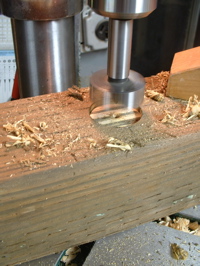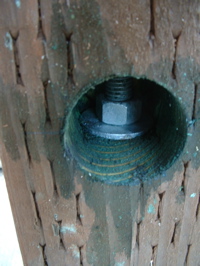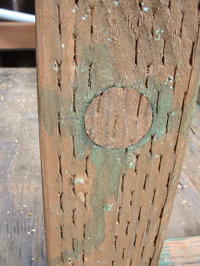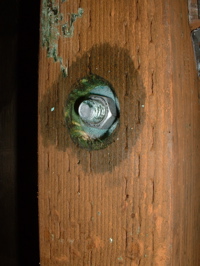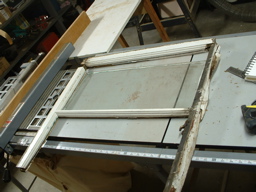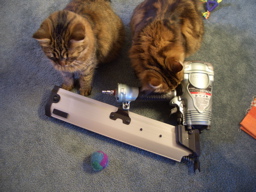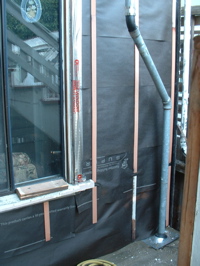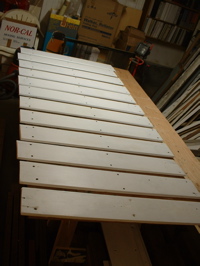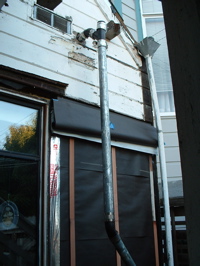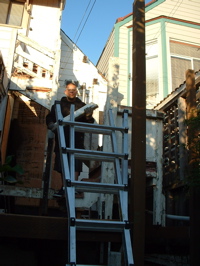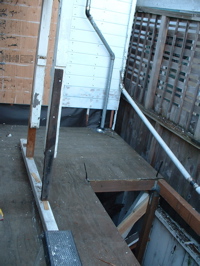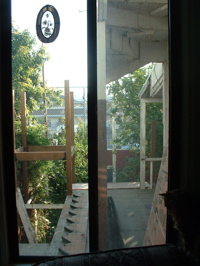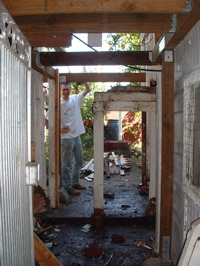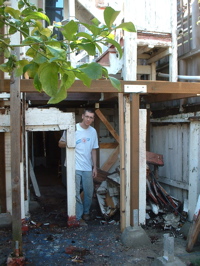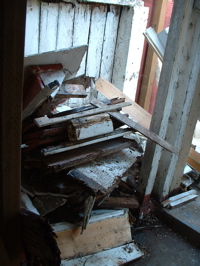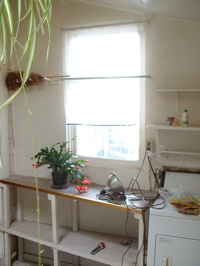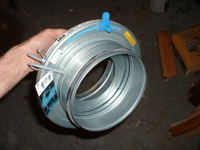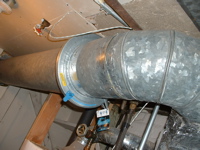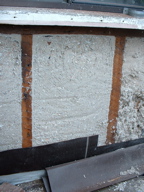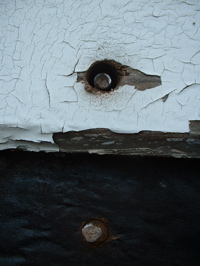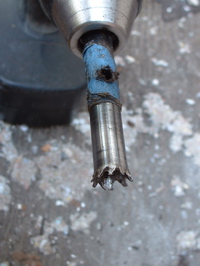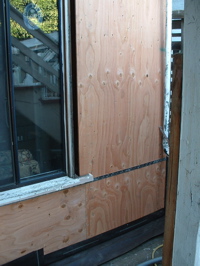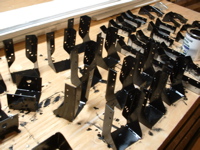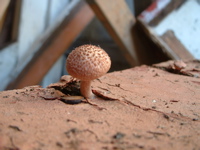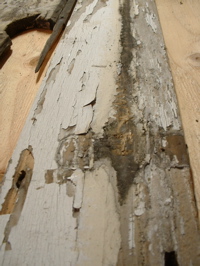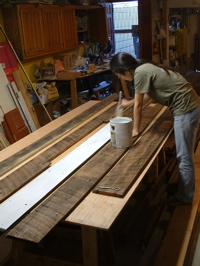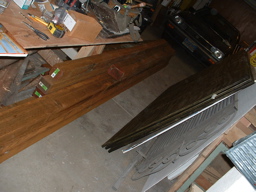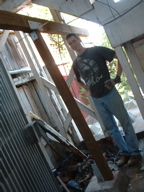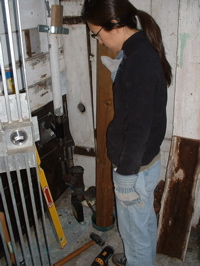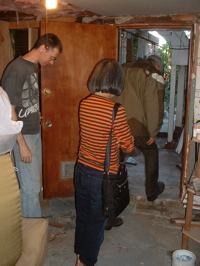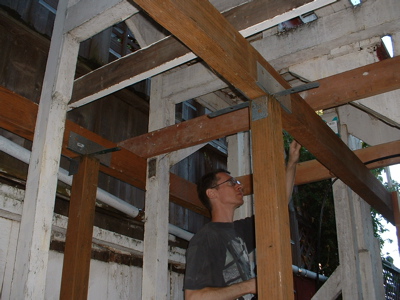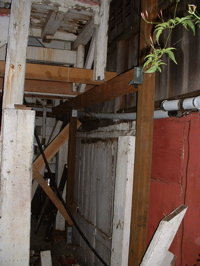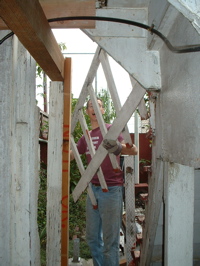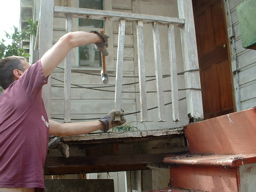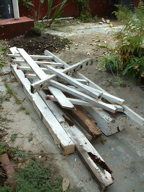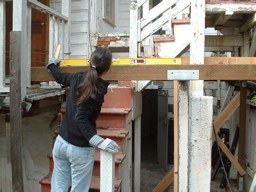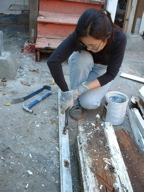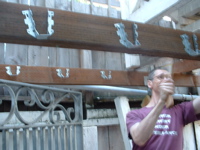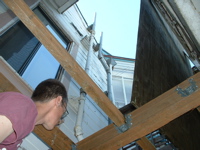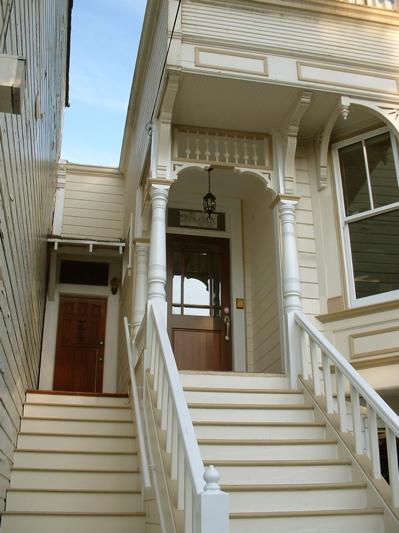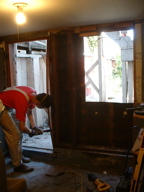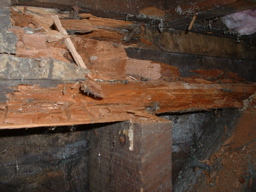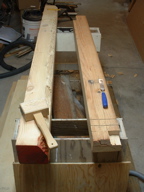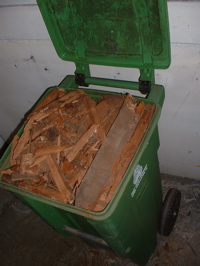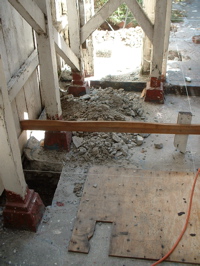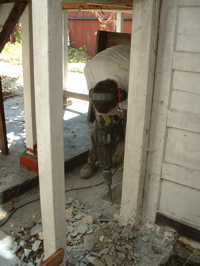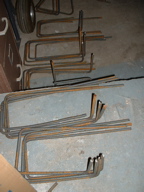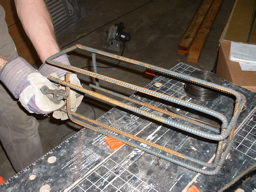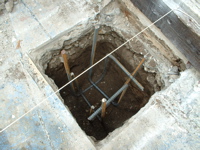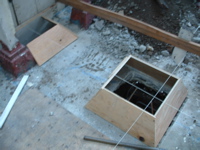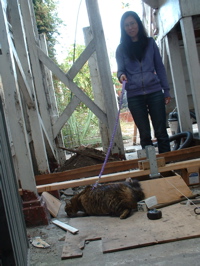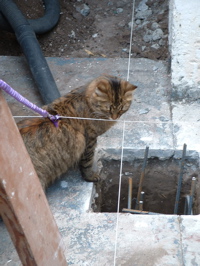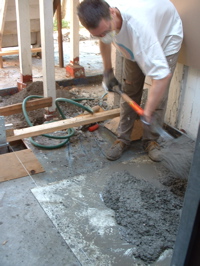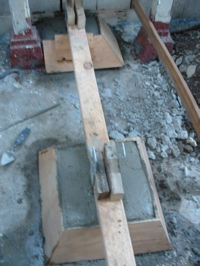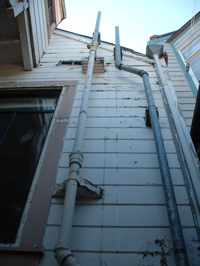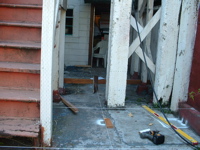Over the past month, I’ve had a lot of work, so not much progress on the house. But last weekend the sun was out, and it was just beautiful winter weather to get a bit more done on the stairs. I pulled another “while I’ve got this open, I’ll just…”
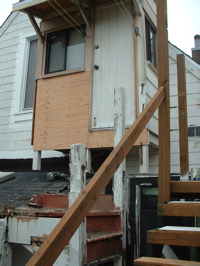
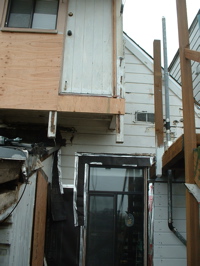
The back porch upstairs smells moldy, is drafty, and has no insulation. So I started tearing off the siding, and added plywood. In the photo above left, the last of the old stairs is peeking out. Gone in the above right. And more nice plywood glamor shots.
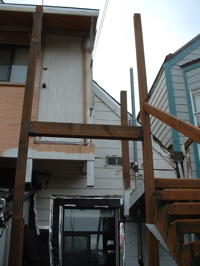
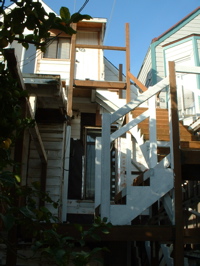
Now I’ve got the stair framing replaced all the way up. Still need to finish the hand rails, painting, and.. and…
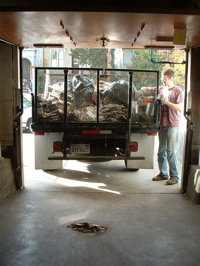
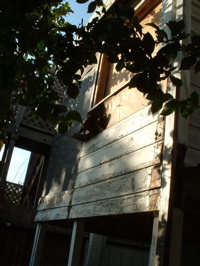
Meanwhile, we built up a rather large pile of rotten wood, and other debris. For months I’ve been trying to put a bit at a time into the garbage can. I finally went out and rented a truck. We piled it full – over a ton of landfill! Now we need to finish tearing off the ‘tear off room’. Above right, partway through pulling off the old siding.
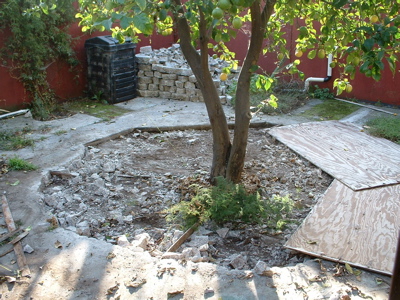
My mum will like this: A couple of weeks ago I had an Arborist over to look at our lemon tree, and the other trees in the back yard. His first suggestion was to tear out the concrete around the tree. He said that putting concrete over roots creates a similar problem to over-watering house plants: The roots can’t get any air and are susceptible to rot.
It took about three hours with a rented jack hammer to take out most of the concrete. The tree looks so much less strangled by the concrete. Now the Arborist is going to come back and do some pruning and put in a couple of Espalier fruit trees. My mum hated all the concrete in the back yard. I agree; now that much of the concrete is gone, I feel like the garden is starting to come back to life.
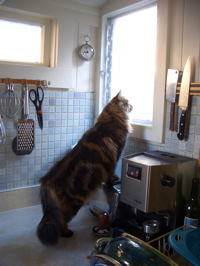

I think Arwen wants to be a plumber: Here she’s looking out the kitchen window watching the contractors installing a new flue. The old furnace was starting to smell of fumes, so we had to replace it. The new one is about half the size. We didn’t get a super high efficiency furnace, but it’s supposed to be about 50% more efficient than the old one.
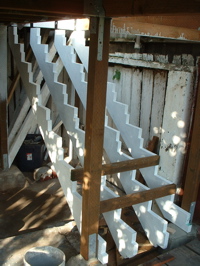

I also started to put in the final leg of the stairs. Because it’s cold out now (by our standards), I paint everything in the garage first.
On my way home a couple of days ago, I walked by a garage sale. They had this nice mirror hung off a tree. The cats seem to think it was a good buy.


“I feel pretty
Oh so pretty…”



